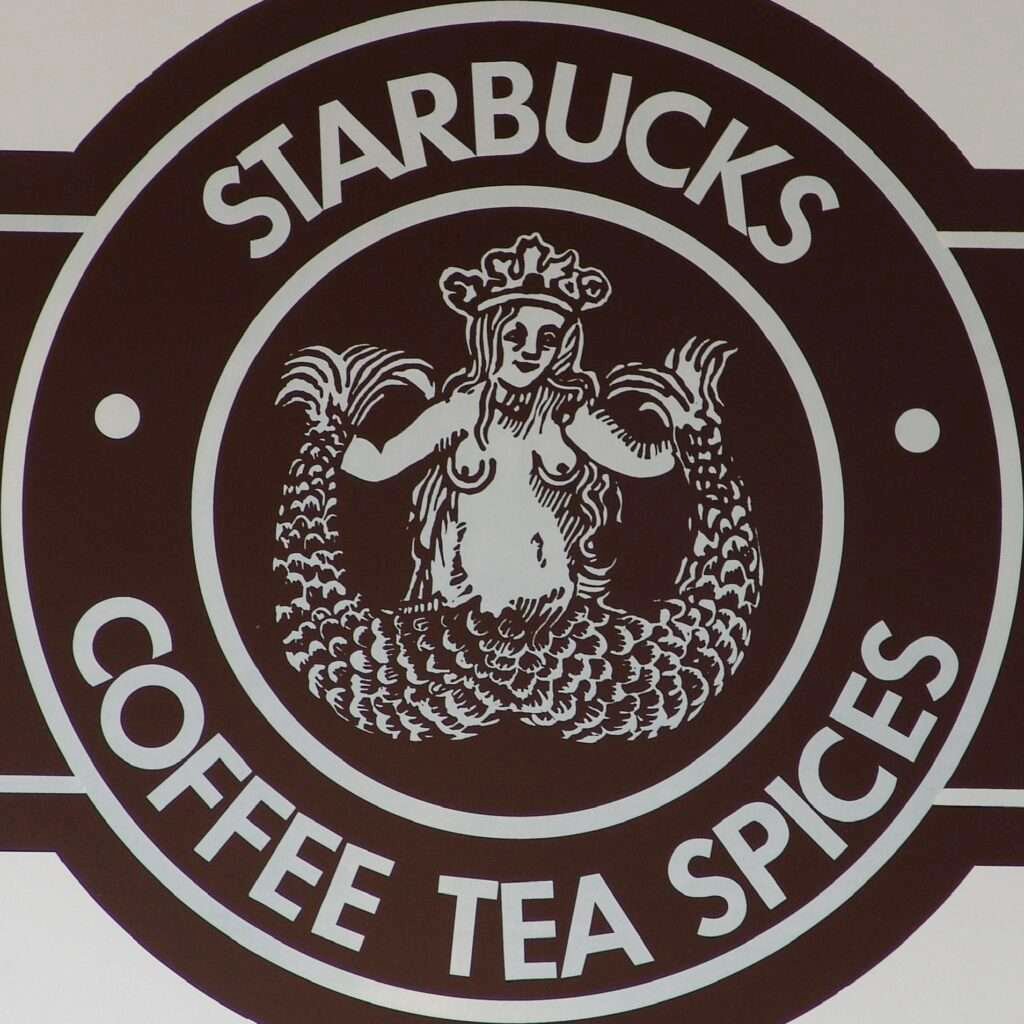Coffee is the most popular beverage in the world. Coffee made from superior varieties of coffee beans has different tastes and needs, along with a high price tag. However, coffee lovers are willing to pay a premium for these superior blends.

Due to the high demand for coffee, various institutions were established for the sale of coffee beans in European countries long ago. Additionally, entrepreneurs have ventured into the coffee house or coffee restaurant business, either individually or jointly. While some have succeeded, others have failed.
Today’s article will delve into the journey of a coffee house that evolved from humble beginnings to become one of the most successful coffee chains globally. Starbucks, a multinational company renowned for its coffee, originated in Seattle, USA. The company not only sells coffee, coffee beans, and other food and beverages but also distributes coffee wholesale to various outlets. It stands as one of the largest coffee house chains in the world.
With coffee shops in more than 30,000 locations worldwide, including 15,000 in the United States alone, Starbucks dominates the market, accounting for two-thirds of all coffee sales in the country. What sets Starbucks apart and contributes to its success?
Founders and Naming

In the vibrant city of Seattle, amidst the historic Pike Place Market, an unassuming trio embarked on a remarkable journey in 1971. Comprising English teacher Jerry Baldwin, history teacher Zev Siegl, and writer Gordon Bowker, they established a quaint specialty coffee store. With just a handful of coffee beans and brewing equipment, their humble endeavor aimed to introduce exceptional coffee to the masses. They meticulously curated whole-bean coffee sourced from exotic locales like Colombia, Indonesia, and Ethiopia, roasting and hand-scooping each batch into simple paper bags.
Their tale unfolded against the backdrop of the 1960s, an era where most Americans preferred home-brewed coffee, devoid of any urban coffee culture. However, the winds of change swept in when Gordon Bowker embarked on a transformative trip to Italy in 1962. Enraptured by the rich and flavorful coffee experience in Milan, Bowker, a college dropout from Seattle, found himself longing for the same taste upon his return. Failing to find it in his hometown, he ventured to Vancouver, British Columbia, in search of quality coffee.
One fateful evening, Bowker shared his coffee odyssey with his university pals, Jerry and Zev, sparking a revolutionary idea to establish their own coffee company in Seattle. Eager to turn their shared passion into reality, the trio dove headfirst into the venture. Despite their boundless enthusiasm, they lacked the crucial ingredient experience.
Zev Siegel, tasked with finding guidance for their venture, scoured phone books and newspapers until he stumbled upon a beacon of expertise the gourmet coffee company, Pete’s, in Berkeley, California. Under the tutelage of Alfred Pete, a Dutch immigrant renowned for revolutionizing America’s coffee culture, Siegel delved deep into the world of coffee beans and business acumen.
Impressed by Pete’s wisdom, Siegel forged a mentorship, while Jerry and Gordon made pilgrimages to California to glean insights into the coffee business. With Pete’s blessing and support, the trio returned to Seattle with newfound knowledge and a storefront in the bustling Pike Place Market.
As fate would have it, Baldwin and Bowker had previously ventured into another endeavor, a documentary film company named Peacod, inspired by Moby Dick. Although their cinematic aspirations faltered, the maritime connection endured, influencing the naming of their new venture.
Drawing inspiration from Starbuck, the chief mate in Moby Dick, and spurred by the belief in the power of words beginning with “St,” the founders christened their coffee company “Starbucks” on March 30th, 1971. With meager funds and no prior business experience, Gordon Bowker, Jerry Baldwin, and Zev Siegel embarked on a bold and audacious journey, birthing what would become one of the world’s most iconic coffee shops.
The Logo

Starbucks’ logo has seen quite the journey over the years. According to the company’s website, they stumbled upon a captivating nautical figure during their research of old marine books a mysterious siren dating back to the 16th century. This discovery struck a chord with them, leading to the adoption of the siren as their logo. While it’s easy to assume they chose the siren because of its mermaid-like appearance and association with the sea, there’s a deeper, darker reason behind the decision.
The siren has a rich, albeit troubling, history in Greek mythology. Initially depicted as a bird with a woman’s head, it later evolved into a more humanoid form with wings and bird feet, eventually becoming the mermaid-like creature we know today. Throughout its various iterations, the siren maintained consistent characteristics it was both seductive and dangerous, using its beauty to lure sailors to their demise. Familiar examples include the tale of Odysseus, who famously resisted their allure by tying himself to a mast.
But what does this all have to do with Starbucks? Well, let’s delve into the origins of their logo.

The original depiction of the siren featured a bare-breasted figure with a split tail, positioned in a seductive manner. This intentional choice aimed to evoke the irresistible allure of Starbucks’ coffee, mirroring how sailors couldn’t resist the call of the sirens. As the company expanded, however, they faced criticism for the risqué nature of the logo, particularly when scaled up in size for use on trucks and other merchandise.

In response, Starbucks gradually modified the artwork to make it more palatable to a wider audience. Despite these changes, the siren remained the focal point of the logo. In fact, in 2008, the company briefly reverted to the original bare-breasted depiction, only to discontinue it swiftly due to public outcry. While Starbucks doesn’t explicitly acknowledge this aspect of their logo evolution, it underscores their enduring commitment to the siren symbol. While some may find the strategy of seduction and irresistibility unsettling, it’s undeniable that it has been effective for Starbucks. The allure of the siren continues to draw customers to their coffee, embodying the company’s dedication to crafting an irresistible experience.
Reason behind the success

Howard Schultz believed that Starbucks wasn’t just about coffee; it was about creating a unique experience for consumers. His vision was to cultivate an environment where people could not only enjoy a cup of coffee but also savor a personal moment. To realize this vision, Schultz and his team focused on creating spaces that offered comfort and versatility—think cozy sofas, inviting fireplaces, and areas for both socializing with friends or quietly working. They also ensured amenities like free Wi-Fi to enhance the overall experience. Additionally, Schultz emphasized the importance of friendly and attentive customer service, providing training to staff to maintain a welcoming atmosphere.
Quality was paramount for Schultz, who aimed to deliver top-notch roasted coffee to Starbucks customers. This dedication to excellence helped establish Starbucks as the go-to destination for premium coffee beans, with few competitors able to match their standards.
Strategic location selection played a significant role in Starbucks’ success. By strategically placing multiple stores within close proximity, Starbucks made it convenient for customers to access their favorite brews. Furthermore, the variety of atmospheres within Starbucks locations catered to different preferences—whether patrons sought a lively ambiance or a tranquil setting.
Employee training was another key aspect of Starbucks’ success story. Staff members were trained to engage with customers warmly and efficiently, contributing to the overall positive experience. Additionally, Starbucks offered opportunities for customers to customize their drinks and even provided online services through their dedicated app.
Beyond serving coffee, Starbucks has made significant contributions through its Starbucks Foundation, providing financial support across various sectors. With a brand value of approximately $11.79 billion and a market value of around $90 billion, Starbucks has solidified its position as a leader in the coffee industry. In 2019 alone, the company recorded sales of approximately $26.5 billion and revenue of about $17.9 billion. With assets totaling $27.47 billion and a global workforce of around 350,000 employees, Starbucks operates in 78 countries, boasting over 34,000 coffee shops worldwide. The company’s commitment to quality, innovation, and customer satisfaction has helped it outshine competitors like Dunkin’ Donuts, Tim Hortons, and Costa Coffee.
From Starbucks’ success story, there are valuable lessons to be gleaned. Embracing innovation, prioritizing customer needs, and creating inviting environments are crucial aspects. Additionally, making timely decisions, strategic planning, and effective management are essential ingredients for achieving success in today’s competitive landscape. By embodying these principles, Starbucks has carved out a remarkable legacy in the coffee industry.
